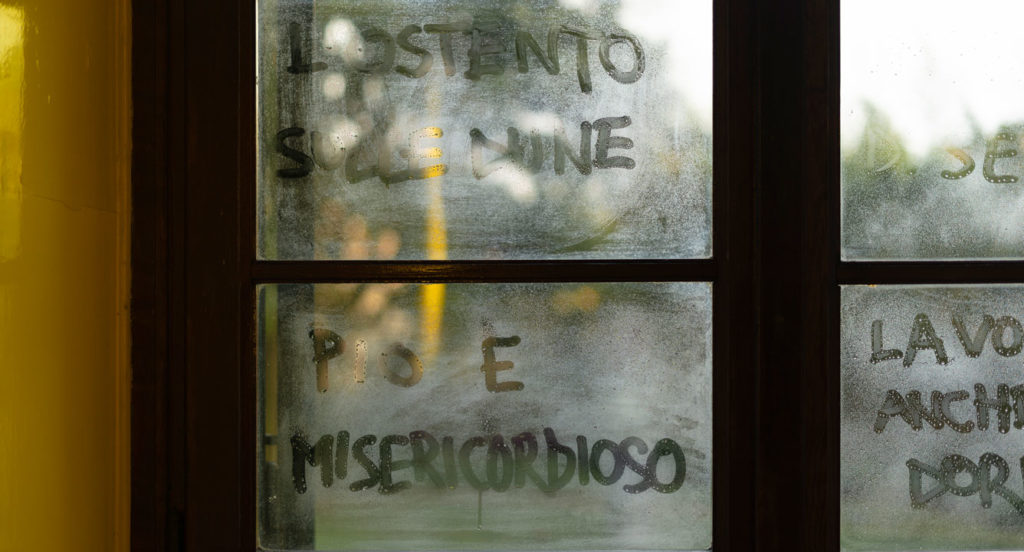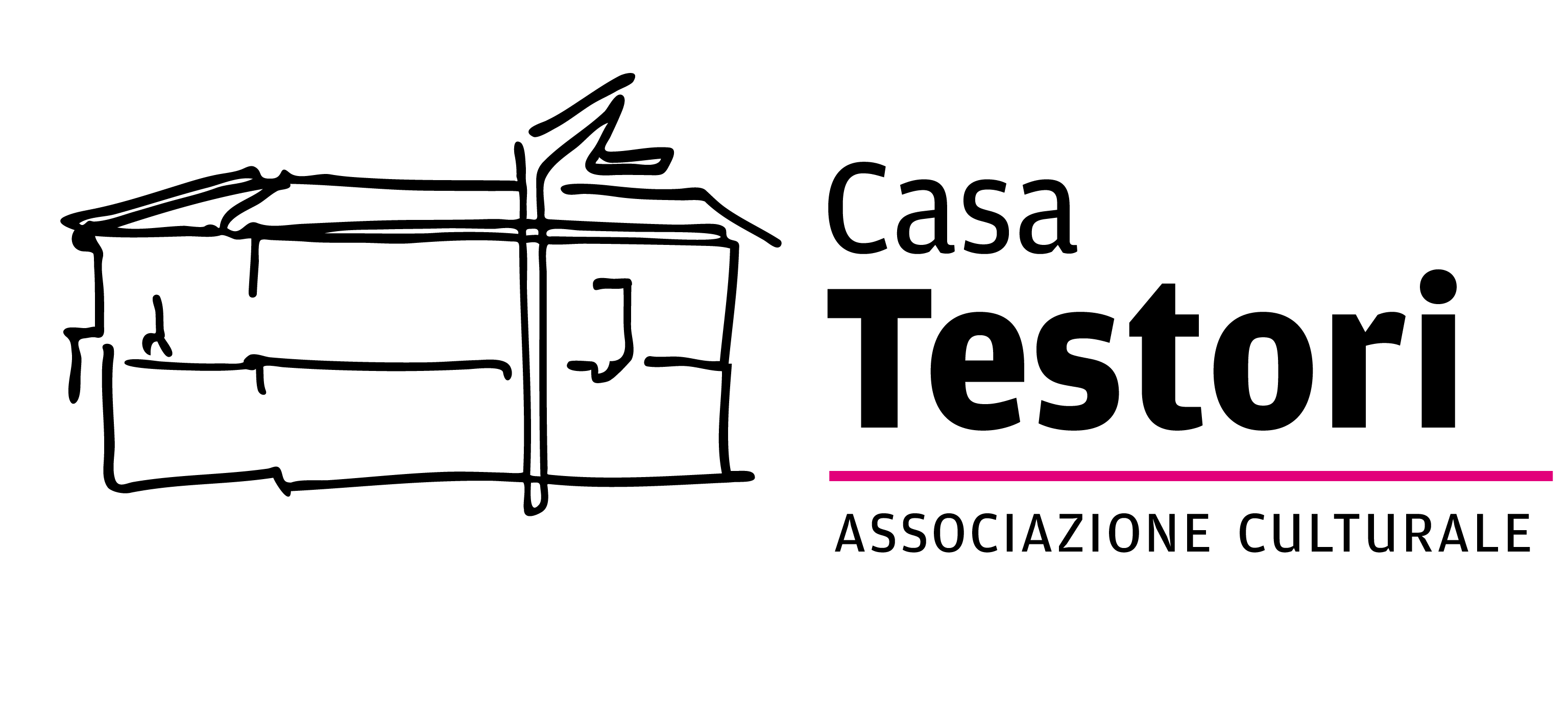MA ALLORA, PERCHÈ M’HA FATTO VENIRE QUI?
Francesco Tola
Curated by Il Colorificio
Casa Testori
5 May – 19 June 2021

PROLOGUE
Il Colorificio
On 5th March, 2021 the curatorial collective and project space Il Colorificio begins its collaboration with Casa Testori—the cultural association located in the original house of Giovanni Testori in Novate Milanese. Casa Testori aims to promote the legacy of the Milanese writer, playwright, art historian and artist, as well as any contemporary research relating to this heritage.
Within this frame, Il Colorificio presents the project Ma allora, perché m’ha fatto venir qui?, fifth chapter of L’Ano Solare. A year-long programme on sex and self-display – a research project challenging sexuality and collective practices of self-representation.
Ma allora, perché m’ha fatto venir qui? focuses on the multilayered figure of Giovanni Testori (1923, Novate Milanese – 1993, Milan). The writer has been a guiding figure for L’Ano Solare, particularly because of his attention to a theatre of the oppressed, for his ceaseless study of bodies and the collective body, for his contradictory and still partially unexplored erotic imagery.
Ma allora, perché m’ha fatto venir qui? is articulated through two solo shows, the first by Francesco Tola(1992, Ozieri; lives in Milan) at Casa Testori, the second by Giovanni Testori at Il Colorificio.
With the cycle I segreti di Milano (beginning with the posthumous Nebbia sul Giambellino) Testori becomes the voice of the inhabitants of the Milanese suburbs. He is the critic who rescued the Sacri Monti – particularly the one in Varallo, which he described in Il gran teatro montano – from the oblivion of folk clichés, returning their legacy to historical and artistic studies; he was the first playwright who, in L’Arialda (1960), gave space to homosexual love on stage, without falling into stereotypes or turning his characters into caricatures. His homosexuality, which he wrestled with throughout his life because of his deeply rooted Catholic faith, is a fundamental matter that can be questioned and compared with that of other historical figures who led battles in the Italian public debate. Indeed, in the context of L’ano solare, Testori is an unorthodox voice when compared to other critics emerging in the field of theory in the 1960s and 1970s, such as Carla Lonzi, Guy Hocquenghem, Monique Wittig, Mario Mieli and Mariasilva Spolato. However, that is the reason why he offers lateral and conflicting insights, often politically contradictory with the direction taken by L’Ano Solare, but pivotal for understanding the unique human history and cultural humus of Milan during the last four decades of Testori’s life.
The methodology applied to this project has consisted in in-depth research concentrated on the life and work of Testori, made possible through archival visits at Casa Testori and trips to the Sacri Monti, partaken by Il Colorificio, artist Francesco Tola and researcher Mariacarla Molè (1991, Ragusa; lives in Turin) […]. The original intention was to recontextualise the “hot” topic of sexuality
in Testori – “hot” since it encountered opposition from Catholic Groups supporting the author, and, therefore, hasn’t been thoroughly explored.
We believe that re-examining sex and anality in Testori – as physical and conceptual devices of disidentification and transcendence of gender and sexual orientation – can be relevant today in order to re-read the author, updating his grammar and imagining hidden practices such as cruising – which seems to emerge in some of his works – and thus tracing a space of queer possibilities.
Ma allora, perché m’ha fatto venir fin qui? (Why did he make me come over here, then?) is the question that, in the tragedy L’Arialda, Lino asks Eros, wanting an explanation for their choice of meeting in the dark fields around the quarry. The play, written by Testori and directed by Luchino Visconti was censored in 1960 “for turpitude and triviality” and for its portrayal of a gay couple. The accusation implied in the question entails something unspoken or misunderstood, a dimension of illicitness and a fear of stigma, and masks a double reading. Sexuality is presented in the scene as something unexpected, that leaves one puzzled – a prelude to a scenario made up of possibilities that require choices and, to this day, shared societal responsibilities.
Ma allora, perché m’ha fatto venir qui? investigates the theme of sexuality starting from Testori’s work and moving away from it – encompassing archive material, texts and drawings – identifying conflicts and discontinuities in his thinking, caused by a strongly normative historical and religious context. It also interrogates identities and sexual representations connected to or inspired by Testori, building an archaeology of imaginaries and renegotiating them in the light of emancipations and experiences situated in the present day.
Since both shows share a trans-temporal enquiry, they also bear the same title, imagining that the artists have tried to answer the same question, inaugurating paths that are both divergent and consonant.
[…]
THE EXHIBITION
At Casa Testori, Francesco Tola’s exhibition consists of new productions, specially conceived in relation to the architecture of the space, while at the premises of Il Colorificio (a curatorial collective and project space composed of Michele Bertolino, Bernardo Follini, Giulia Gregnanin and Sebastiano Pala) a selection of Giovanni Testori’s erotic drawings produced between 1973 and 1974 is presented in an immersive installation.
In the small publication developed for the occasion, in addition to the text by Il Colorificio, there is a contribution by the researcher Mariacarla Molè who, together with Francesco Tola, has conducted research in the Casa Testori archive.
